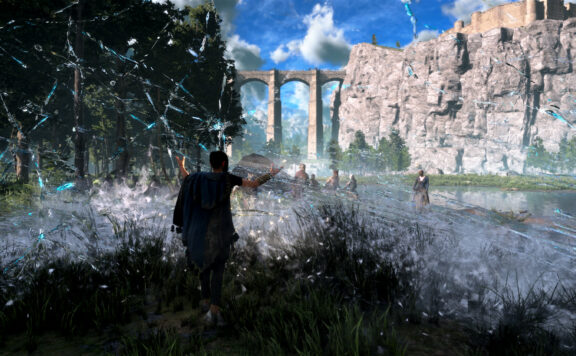Lately, the Nintendo Switch has no lack of quality games. This ranges from great games from indie companies to big names like Square Enix. There also seems to be a rash of remastered or converted games, many are games we might have forgotten about. Games are cropping up that originally released on systems like Steam PC and now even the Nintendo Wii. One such game is Square Enix’s science fiction based puzzler named The Turing Test which was released nearly four years ago on Steam PC. If you’re a player who opts to play less trigger-happy games while seeking a “cerebral challenge” then look no further then The Turing Test. This is our Nintendo Switch review of The Turing Test!
Sci-Fi Story At Its Core
The game’s story takes place on Jupiter’s moon, Europa. You play as Ava. Ava is an engineer for the International Space Agency (ISA) sent to discover the disappearance of the ground crew stationed there. The story unfolds as spoken dialogue between Ava and the station’s Artificial Intelligence (A.I.), T.O.M. The station’s T.O.M is akin to a male counterpart of the Waverider’s Gideon on the CW show DC’s “Legends Of Tomorrow“.
One of the unique things about The Turing Test is its played in a first-person perspective which is typically unusual for a puzzle game. I typically shy away from first-person shooter games. I almost overlooked The Turing Test by making the assumption that it was a shooter game based solely on some of the screenshots. Thankfully I saw the words “puzzle game” and decided to take a deeper look. What I found wasn’t a shooter game but a well-crafted puzzle game instead.
The story plays out mostly as a spoken dialogue between Ava and T.O.M. These interactions happen when you exit a “level” and are advancing to the next. T.O.M. will tell you what’s what about systems, the crew and why you’re here. The banter between the two characters is quite entertaining in itself. Not so much in a “ha-ha” way but more in a “2001: A Space Odyssey” way. One shortcoming here was this spoken dialogue seemed low in the mix when playing in handheld mode, even near full volume. Thankfully story dialogue is shown as text during these scenes as well.
“Turing” What?
Early on you’ll learn from T.O.M. that “Turing tests” are tests designed to distinguish humans from machines. Typically the challenges presented are “a combination of logical and lateral thinking”. The “tests” in this game are trying to figure out how to open the “exit” door for the current room, or set of rooms, you’re in. “Rooms” in this context are akin to “levels”.
The puzzles involve getting power to the exit door of the current section. This involves, e.g., moving power energy balls around, using lighted cubes as keys, and throwing levers to redirect current. The puzzles, while not overly challenging, especially since most only have one solution, were still satisfying and fun. This holds true even for myself being considered a veteran puzzle gamer. There were enough unique solutions from room-to-room to keep it interesting. The whole room-by-room concept had a reminiscent “Portal-like” vibe to it if you’ve ever played that game.
Little Help From Our Friends
One of the game’s other shortcomings is you’re not introduced outright to the game’s concepts. For example, early on you’re given an E.M.T. (“Energy Manipulation Tool”) which is a gadget that looks a lot like a gun. Unfortunately, you’re not told exactly what it is or what to do with it. Originally, I spent minutes pushing buttons trying to get something to “fire”. Another example, in one of the early stages, you need to get a “key cube” up a ladder but you can’t carry the cube while traversing the ladder as both operations use the “A” button. The way to get past this involved a solution not overly obvious using a piece of scenery that presented itself as misleading.
Other than the minor dialogue clarity issue the game played well in handheld mode. The conversion made great use of the ZL and ZR buttons to move energy balls around. The entire game will take most likely about ten hours to get through but at a price tag of $19.99 USD that still feels like a good value.
Compare To: Portal
Note: A Nintendo Switch eShop code was provided for the purpose of this review.











